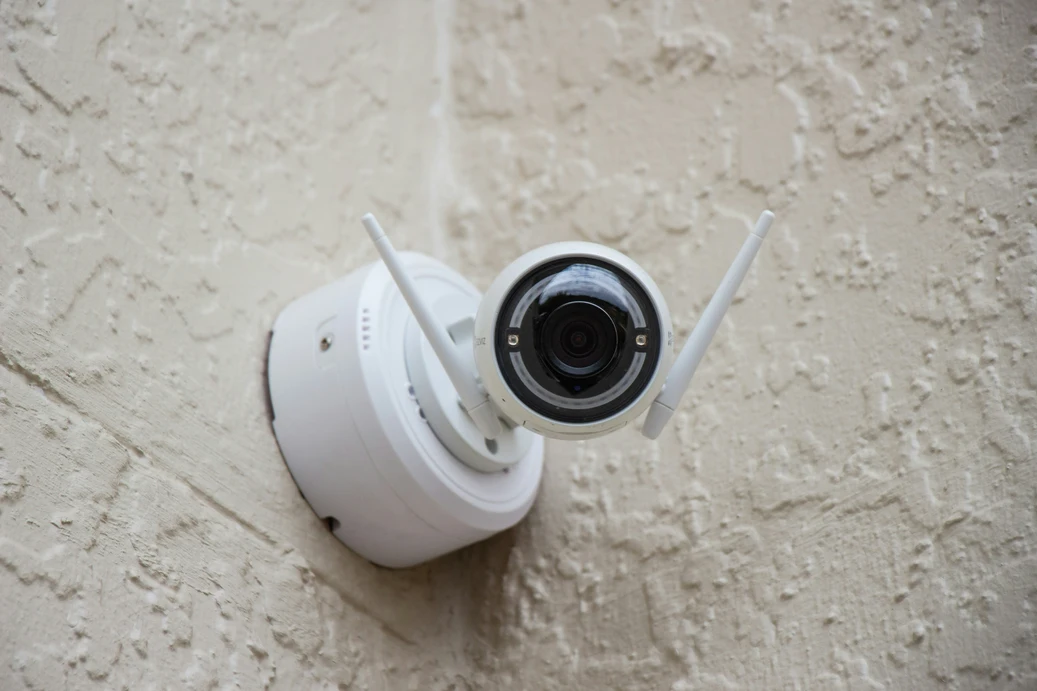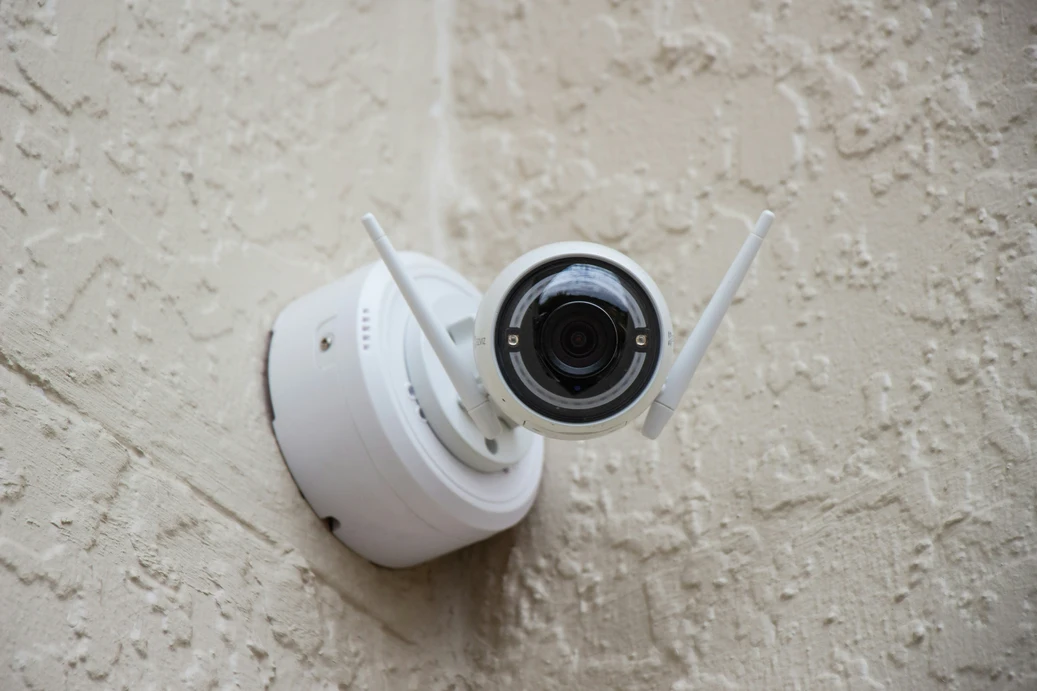Most people think of security in terms of locks, cameras, and alarms, but few realize how much their environment influences awareness. One subtle yet effective factor is the psychology of color. The colors you surround yourself with can affect your emotions, decision-making, and alertness. This makes color choices in your home more important than you might expect when it comes to security awareness. Understanding the connection between interior design and security can help you build a home that’s not only beautiful but also promotes a safer mindset.

Why Color Choices Affect Security Awareness
The way your brain processes colors has a direct impact on mood and awareness. For example, warm tones can stimulate attention, while cooler shades create calmness. When you consider color choices in your home as part of security awareness, you begin to design rooms that encourage vigilance without creating anxiety. The right color balance can improve your ability to recognize threats, stay alert, and feel confident in your environment.
Colors are not just decorative elements—they are subtle cues that shape behavior. In security contexts, these cues can mean the difference between noticing a potential problem or overlooking it. For instance, brighter tones can make hidden corners more visible, while muted shades help reduce visual clutter so unusual movement stands out more clearly. Designing with color in mind is an often-overlooked yet powerful part of secure living.
1. Red Accents for Immediate Alertness
Red is a color choice naturally linked with urgency and warning signs. That’s why stop signs, alarms, and emergency buttons are red. Integrating subtle red accents in key areas of your home can heighten security awareness. For example, a red frame near entry points or a red lamp in hallways makes you subconsciously more aware of your surroundings. Too much red can be overwhelming, creating unnecessary tension, but small doses encourage alertness without disrupting style.
A good approach is to use red strategically in transitional spaces—entryways, hallways, and staircases. These are places where awareness is most needed. Red does not need to dominate; a small accessory like a rug, door mat, or picture frame can have a strong effect on attentiveness. In terms of color choices in your home for security awareness, red works best when used sparingly and intentionally.
2. Blue for Calm Observation
A constantly tense atmosphere reduces effective awareness. Blue tones help balance this by encouraging calm observation. Using blue in living rooms or home offices supports a relaxed yet attentive mindset. When you feel calm, you’re less likely to overlook subtle security risks.
Blue has been linked to logical thinking and focus, which makes it a strong color choice for areas where decision-making happens. For example, a study space painted in soft blue tones can encourage focus, making you more likely to notice important details. Darker shades of blue create a sense of stability, while lighter blues make a space feel open and alert. By incorporating blue, your color choices in your home contribute not only to style but also to a balanced security mindset.
3. Yellow for Enhanced Visibility
Yellow is a color choice strongly associated with attention and visibility, which is why it’s used in caution signs and traffic signals. When incorporated into home design, yellow walls or accents in darker hallways and staircases improve visibility. This makes it easier to notice unusual movement or misplaced items. In terms of color choices in your home for security awareness, yellow is one of the most effective in reducing blind spots.
If you live in a home with limited natural light, yellow tones can simulate brightness, making spaces appear more open and easier to navigate. A yellow accent wall near entry points or reflective yellow décor in poorly lit corners can improve security awareness dramatically. The key is to balance yellow with neutrals so the effect is energizing without being overwhelming.

4. Neutral Tones to Reduce Distractions
A safe environment is one where distractions are minimized. Neutral colors like beige, gray, or soft white provide a clean backdrop that allows you to focus on what matters. When your home is visually cluttered with too many bright colors, you may miss security cues. Choosing neutral tones creates a balanced space that supports awareness while keeping the environment stylish and modern.
Neutral tones also pair well with accent colors used for alertness. For example, a gray living room accented with a red throw blanket achieves both calmness and attentiveness. This layered approach ensures your design serves multiple functions: beauty, comfort, and heightened security awareness. Neutrals are particularly effective for larger areas where calm focus is essential, such as bedrooms and kitchens.
5. Contrasting Colors for Clear Boundaries
Security awareness is not just about vigilance but also about navigation. Contrasting colors help define spaces clearly, such as marking doorframes or stair edges. This reduces accidents, improves visibility at night, and ensures important areas are not overlooked. By applying contrast, your color choices in your home double as subtle reminders of boundaries and safety zones.
For example, painting doorframes in a contrasting shade from the wall helps them stand out, especially in low light. Contrasting floor tiles in kitchens and bathrooms prevent slips by making wet areas more visible. These design choices might feel purely decorative, but in reality, they create subtle safety markers that keep you more alert in everyday living.
Applying Color Psychology Room by Room
To maximize the impact of color choices on security awareness, it’s best to think about each room individually:
- Entryways: Red or yellow accents work well here to trigger immediate alertness as you enter or leave your home.
- Living Room: Blue tones promote calm vigilance, allowing you to stay observant without anxiety.
- Hallways & Staircases: Yellow improves visibility and prevents accidents in areas with low light.
- Bedrooms: Neutral tones with small contrasting elements balance relaxation with awareness.
- Kitchens & Bathrooms: Contrasting floor tiles and reflective surfaces ensure safety and clarity of movement.
By tailoring color choices to each space, your home design becomes both functional and secure.
Balancing Style and Safety
One of the biggest concerns homeowners have is that security-focused design might compromise style. But color psychology shows that you don’t need to sacrifice beauty for awareness. The best approach is to create a layered palette: start with a neutral base, then add small bursts of alert colors like red or yellow in key areas, and finish with calming shades like blue to balance the mood. This strategy ensures your home remains stylish, comfortable, and secure at the same time.
Interior designers often emphasize that the most effective spaces are those that reflect personality while supporting lifestyle needs. If your lifestyle values both aesthetics and safety, integrating color choice psychology becomes a natural choice. In this way, your home design evolves from being merely decorative to being an active part of your security system.

FAQS (Frequently Asked Questions)
1. Can color really improve home security, or is it just psychological?
Color primarily influences psychological awareness, which can indirectly improve security. By using colors that encourage alertness and clarity, you create an environment where risks are easier to notice, which reduces vulnerabilities.
2. What color choices should I avoid for security awareness?
Dark shades like black or deep gray in poorly lit areas can obscure visibility and create blind spots. Overly muted tones throughout the home may also reduce stimulation and alertness, which can work against security awareness.
3. How does lighting enhance the effect of color choices on security?
Lighting highlights color and amplifies its impact. A brightly lit hallway with pale walls ensures visibility, while layered lighting in living areas paired with calming but alert tones like green or blue creates both comfort and awareness.
4. Can outdoor paint colors deter intruders?
Yes, outdoor color combined with good lighting can deter intruders. Lighter shades reflect more light, making it harder for someone to stay unnoticed. Contrasting trim colors also help draw attention to doors and windows.
5. What color choices are best for creating safe pathways indoors?
Bright, warm tones like soft yellow or muted orange can create inviting pathways while naturally drawing attention to steps or transitions between rooms, reducing the risk of trips or falls.
6. Is there a balance between stylish design and security-focused colors?
Absolutely. The key is subtlety. For example, use elegant neutral palettes for main areas, but integrate bolder accent colors near entry points, staircases, or other sensitive zones to maintain both style and safety.
7. Can color zoning be applied to security design?
Yes, color zoning works well for security. Assigning specific colors to entryways, staircases, and working areas not only organizes your space but also heightens awareness in zones where safety matters most.
8. How often should I update my home’s colors for security purposes?
There’s no strict timeline, but refreshing colors every few years keeps spaces bright, prevents fading, and maintains their psychological impact. When repainting, consider how updated choices can better support both design and security.
9. Are there cultural differences in how colors affect security awareness?
Yes, cultural associations with color vary, and so do their impacts. For instance, white may symbolize safety and clarity in some cultures but emptiness in others. When choosing colors, consider personal and cultural perceptions to maximize effectiveness.
10. Can children benefit from color choices that promote awareness?
Definitely. Bright and stimulating colors in play areas can keep children alert and reduce risks of accidents. Softer but clear tones in bedrooms help balance relaxation with awareness.
Conclusion
The connection between interior design and home security is deeper than most people think. By making intentional color choices in your home, you can subtly boost security awareness without sacrificing comfort or style. Red creates alertness, blue encourages calm observation, yellow enhances visibility, neutrals reduce distractions, and contrasts define boundaries. Together, these strategies turn your home into a safe, stylish, and secure environment.
Security isn’t just about the locks on your doors—it’s also about how your environment shapes your awareness. With thoughtful color psychology, you can create a space that keeps you attentive, confident, and secure.
Want More Blogs Like These?
Check out more insightful articles on home safety and design balance in Secure Living on Designs24hr.







